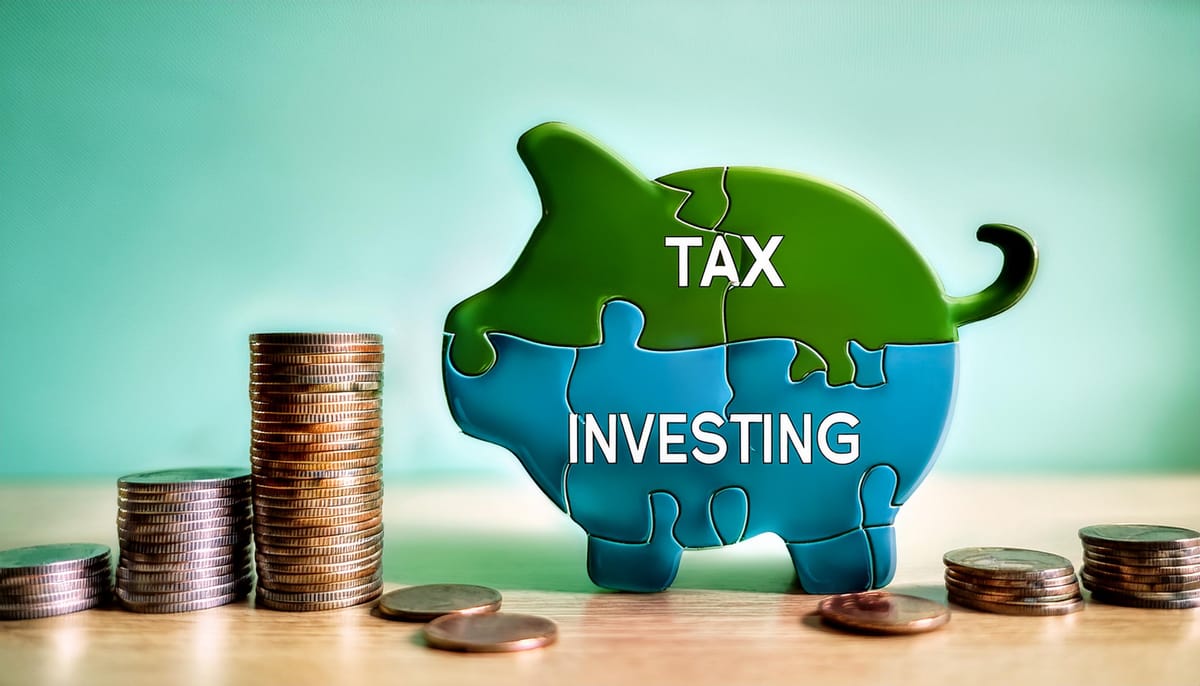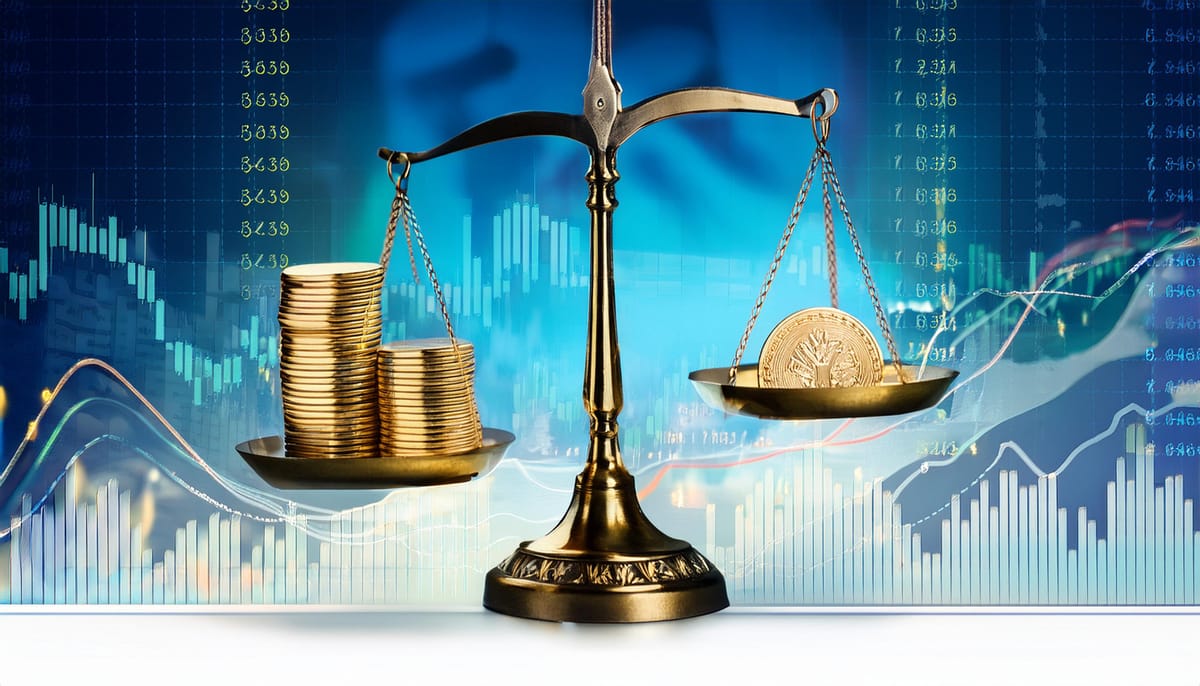Active ETFs: The Dynamic Evolution of Exchange-Traded Funds
In the ever-evolving world of finance, Exchange-Traded Funds (ETFs) have become a cornerstone of modern investing. Among these, Active ETFs have emerged as a fascinating hybrid, blending the best features of traditional ETFs with the potential advantages of active management. Let's dive into the world of Active ETFs, exploring their history, features, benefits, and role in today's investment landscape.

Lean more about ETFs and improve your performance.
The Birth and Growth of Active ETFs
Imagine a financial instrument that combines the agility of a cheetah with the wisdom of an owl. That's essentially what Active ETFs bring to the table. Born in 2008, these investment vehicles were initially met with skepticism. Many wondered if they could truly deliver on their promise of marrying the efficiency of ETFs with the expertise of active management.
Fast forward to today, and Active ETFs have not just survived but thrived. Their growth story is nothing short of remarkable. From holding a mere $112 billion in assets in 2020, Active ETFs have skyrocketed to $663 billion by May 2024, boasting a five-year annual growth rate of over 40%. It's like watching a sapling grow into a mighty oak in fast-forward!
This meteoric rise wasn't just a stroke of luck. Several factors contributed to the surge in popularity of Active ETFs:
- Regulatory tailwinds: The SEC's approval of Rule 6c-11 in 2019 was a game-changer. This rule gave fund providers more flexibility in creating and redeeming ETF shares, opening the floodgates for innovation.
- Market volatility: In times of uncertainty, investors often seek the guiding hand of professional managers. Active ETFs offered this comfort while retaining the benefits of the ETF structure.
- Diversification desires: As passive investing led to concentration in large-cap indices, many investors turned to Active ETFs for broader market exposure.
- Quality offerings: The entry of experienced investment managers into the Active ETF space boosted investor confidence.
Here's a snapshot of the Active ETF evolution:
| Year | Milestone |
|---|---|
| 2008 | First Active ETF launched in the U.S. market |
| 2019 | SEC approves Rule 6c-11, boosting Active ETF flexibility |
| 2020 | Active ETFs hold $112 billion in assets |
| 2022 | Active ETFs capture 15% of ETF flows |
| 2024 | Active ETFs reach $663 billion in assets |

Learn more about diversification and start improving your return today.
The Unique DNA of Active ETFs
Active ETFs are like chameleons in the financial world, adapting to market conditions while retaining the core benefits of the ETF structure. Let's break down their key features:
- Active Management: Unlike their passive cousins, Active ETFs have a team of skilled portfolio managers at the helm. These financial captains navigate market waters, making real-time decisions to potentially outperform benchmark indices.
- Intraday Trading: Active ETFs share the same liquidity as stocks, allowing investors to buy or sell throughout the trading day. It's like having a 24/7 convenience store for your investments!
- Transparency: Most Active ETFs provide daily disclosures of their holdings. This transparency is like having a glass-bottom boat tour of your investment portfolio.
- Tax Efficiency: Thanks to their unique structure, Active ETFs can potentially minimize capital gains distributions. It's like having a built-in tax advisor working for you.
- Lower Costs: While not as cheap as passive ETFs, Active ETFs generally have lower expense ratios compared to similar actively managed mutual funds. Think of it as getting business class service at premium economy prices.
- Flexible Strategies: From thematic investing to tactical asset allocation, Active ETFs can employ a wide range of approaches. It's like having a Swiss Army knife in your investment toolkit.
Here's a table summarizing these features:
| Feature | Description |
|---|---|
| Active Management | Portfolio managers actively select and manage holdings |
| Intraday Trading | Can be bought and sold throughout the trading day |
| Transparency | Most disclose holdings daily |
| Tax Efficiency | Potential to reduce capital gains distributions |
| Lower Costs | Generally cheaper than equivalent mutual funds |
| Flexible Strategies | Can employ various investment approaches |

Master tax efficiency and start saving today
The Allure of Active ETFs: Benefits for Investors
Now that we've dissected the anatomy of Active ETFs, let's explore why they've become the darlings of many investors:
- Potential Outperformance: The holy grail of active management is beating the market. While not guaranteed, skilled managers in Active ETFs have the freedom to chase alpha, potentially delivering returns that surpass passive benchmarks.
- Adaptability: In a world where financial news travels at the speed of light, the ability to pivot quickly is crucial. Active ETF managers can adjust their holdings in response to market shifts, economic data, or geopolitical events. It's like having a financial GPS that recalculates your route in real-time.
- Risk Management: Active managers can employ various strategies to manage downside risk. This could involve shifting to defensive sectors during market turbulence or using hedging techniques to protect the portfolio.
- Access to Expertise: By investing in an Active ETF, you're essentially hiring a team of financial professionals to manage your money. It's like having a personal chef prepare your financial meals instead of relying on pre-packaged options.
- Diversification: Active ETFs can provide exposure to a carefully curated basket of securities. This diversification can help spread risk and potentially smooth out returns over time.
- Transparency and Control: The daily disclosure of holdings in most Active ETFs allows investors to see exactly what they own. This transparency can be particularly valuable for those who like to keep a close eye on their investments.
Remember, while these benefits are enticing, they come with the caveat that active management involves risks, including the possibility of underperforming the benchmark or peer group.

Learn more about risk management and improve your performance.
The Future of Active ETFs: Trends and Challenges
As we look to the horizon, the future of Active ETFs appears bright, but not without its challenges. Here are some trends and hurdles to watch:
- Continued Growth: The momentum behind Active ETFs shows no signs of slowing. As more investors seek the benefits of the ETF structure combined with active management, we can expect further expansion of this sector.
- Innovation in Strategies: Fund providers are likely to continue pushing the envelope, offering increasingly sophisticated and niche strategies within the Active ETF wrapper.
- Regulatory Evolution: As the Active ETF landscape matures, regulators may introduce new rules or modify existing ones to ensure investor protection and market stability.
- Performance Scrutiny: With growth comes increased scrutiny. Investors and analysts will closely monitor the performance of Active ETFs relative to their passive counterparts and actively managed mutual funds.
- Capacity Challenges: Unlike mutual funds, ETFs cannot close to new investors. As popular Active ETFs grow, managers may face challenges in efficiently deploying capital without impacting their strategies.
- Education Gap: As Active ETFs become more complex, there's a growing need for investor education to ensure people understand the products they're buying.
The journey of Active ETFs is far from over. Like a skilled sailor adjusting the sails to changing winds, these investment vehicles will continue to evolve, adapting to market conditions and investor needs.
FAQ
Q: How do Active ETFs differ from passive ETFs? A: Active ETFs are managed by professional fund managers who aim to outperform a benchmark, while passive ETFs simply track an index.
Q: Are Active ETFs more expensive than passive ETFs? A: Generally, yes. Active ETFs typically have higher expense ratios than passive ETFs due to the costs associated with active management.
Q: Can Active ETFs really outperform the market? A: While outperformance is possible, it's not guaranteed. The success of an Active ETF depends on the skill of its managers and their investment strategies.
Q: How often do Active ETFs disclose their holdings? A: Most Active ETFs disclose their holdings daily, though some use semi-transparent or non-transparent structures with less frequent disclosures.
Ready to dive deeper into the world of ETFs? Explore our articles on passive investing and smart beta ETFs to broaden your investment knowledge. Don't forget to sign up for our newsletter to stay updated on the latest trends in the ETF universe!





